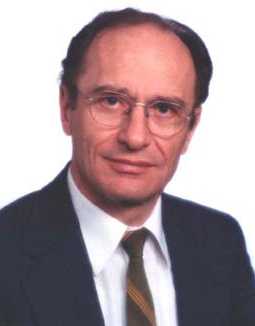- Review of Experimental Concepts for Studying the Quantum Vacuum Field (2006) [Updated 8 years ago]
- Physics of the Zero-Point Field: Implications for Inertia, Gravitation and Mass (1997) [Updated 8 years ago]
- Review of Experimental Concepts for Studying the Quantum Vacuum Field (2006) [Updated 8 years ago]
We review concepts that provide an experimental framework for exploring the possibility and limitations of accessing energy from the space vacuum environment. Quantum electrodynamics (QED) and stochastic electrodynamics (SED) are the theoretical approaches guiding this experimental investigation. This investigation explores the question of whether the quantum vacuum field contains useful energy that can be exploited for applications under the action of a catalyst, or cavity structure, so that energy conservation is not violated. This is similar to the same technical problem at about the same level of technology as that faced by early nuclear energy pioneers who searched for, and successfully discovered, the unique material structure that caused the release of nuclear energy via the neutron chain reaction.
- Physics of the Zero-Point Field: Implications for Inertia, Gravitation and Mass (1997) [Updated 8 years ago]
Online ISSN: 1573-9309. Past issues administered by Springer.
From Thinking Out Loud, David Pacchioli, Research/Penn State, V14, N3 (Sep 1993) http://www.rps.psu.edu/sep93/thinking.html
Speculations in Science and Technology was the brainchild of an American in Australia. William M. Honig, an electrical engineer, had left New York and a career in industry in 1972 to join the faculty of the Western Australia Institute of Technology, in "the beautiful remote city of Perth." Honig had published numerous papers in his field. He was frustrated, though, by the lack of acceptance of some of his more speculative ideas in physics, and by what he called "the canonical policy of established journals." He had met a number of colleagues of like mind and, in 1977, he decided to do something about it. He assembled an editorial board of well-known scientists, including a Nobel Prize winner and a member of the Royal Society, and with some financing from his university and the rest from his savings, launched a journal of his own.
"Recognizing the value of frank speculation as preceding theoretical and experimental construction," announced the opening editorial, "and noting that the informal dissemination of ideas has been impeded by the huge growth and differentiation of all scientific fields . . . we welcome papers dealing with specialised, general, and interdisciplinary topics in the physical, mathematical, biological, medical, and engineering sciences. No topics related to ESP, UFO, etc., will be accepted."
Some 2,500 letters poured in over the first five months. (One early correspondent, writer Arthur C. Clarke, found Speculations "fascinating, but 90 percent over my head." Clarke couldn't resist offering up a few casual speculations of his own: "Is it possible to photograph, or make an objective record of, 'phosphenes,' ? the fascinating and infinitely varied images seen when pressing on the closed eyes? This would be of great psychological and optical interest.") There were "favourable but cautionary" notices in Science and the New York Times, among other publications. By the end of the first year, Honig was able to strike a deal with the publisher Elsevier Sequoia, of Lausanne, Switzerland; despite changing hands and continents in the intervening 15 years, the journal has been appearing ever since.
The wealth of topics it has considered is boggling. The journal's pages have hosted lively debate on ball lightning and schizophrenic cognition, black holes and the prediction of heart attacks, body transplants and interstellar communication, as well as the perennial exchanges on the nature of subatomic particles.



